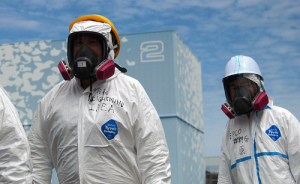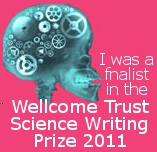This article was recently featured in the Tampa Tribune Newspaper - a discussion with experts about alternative nuclear power. Enjoy!
We are in an increasingly energy-hungry world.
As we sit enjoying breakfast in well-lit, air conditioned homes, Nigeria is crippled by power outages. The most rapidly developing African nation is blighted by near-continuous black-outs. At night, families huddle around kerosene burners for heat and light.However, we in the West are not immune to the perils of energy shortages. Oil supplies are dwindling, and the USA’s aging electricity grid is buckling under our insatiable appetite for 24/7 air conditioning, computing and entertainment. Washington, D.C., recently saw a new wave of blackouts — one, ironically, causing a shutdown in the nation’s electricity control center. Unless something is done soon, our future could be a very dark one.
A few weeks ago I wrote an article about an alternative nuclear power called thorium reactors (“The future of nuclear power after Fukushima”). Promising clean, affordable, safe power, thorium energy could meet the world’s needs both for today and tomorrow.
Not everyone saw it that way: The piece was greeted by Tampa Tribune and blog readers with a mixture of fervent excitement and cautious skepticism. Many wanted more answers — surely, the solution can’t be that simple.
So, in an attempt to get to the core of the matter, I approached some experts to get those questions answered.
Will Thorium End our Energy Crisis? The Experts Face Off with The Skeptics.

Kirk Sorensen (Source: Blogger Profile)
Kirk Sorensen is the USA’s figurehead in the “clean nuclear power” revolution. He became inspired about thorium energy while working as a novice engineer for NASA. By chance, he stumbled upon an old nuclear power manuscript from the 1950s. Thumbing through its dusty pages he was instantly captivated by the potential of this long-neglected technology. After half a career dedicated to researching and testing thorium power, Sorenson is now the USA’s top thinker in alternative nuclear power. So convinced that thorium offers real solutions, he even ditched his day job to form a new thorium-energy company, Flibe Energy.
Had Fukushima, Chernobyl and Three Mile Island been thorium reactors, it is unlikely the word “disaster” and “atomic energy” would be so synonymous. Sorenson exhorts: “The key to safety is the fluoride reactor technology.”
John Kutsch, another leading light in thorium technologies and executive director of the Thorium Energy Alliance, agrees. “Fukushima absolutely, positively would not have happened. … It would have been impossible to hurt [a thorium reactor] by flooding them. They would have just frozen in place,” he says.
Thorium reactor technology sounds too good to be true. In terms of efficiency and waste, thorium reactors would blow conventional nuclear power off the map – they are to conventional atomic energy what a hybrid car is to a gas-guzzling Chevrolet. Thorium is plentiful, and radioactive waste is negligible. So I probed Sorenson, “There must be some disadvantages?” His reply was telling: He insists that the main problem with thorium energy is “that people don’t know about it.”
He went on: Moving forward with thorium-generated electricity means “educating the populace that liquid-fluoride thorium reactor technology can solve the issues of nuclear power that have troubled them in the past.” The stigma of “nuclear” is a tough one to shake. Because of this, it seems many of us would rather stay in the comfort of our aging Chevrolets.These staunch advocates of alternative nuclear power are not without their skeptics. Among them is geology expert Dr. Chuck Magee from the Australian National University. Something of a lone voice in a climate of enthusiasm, Magee insists that thorium is neither as abundant nor as foolproof as Sorenson and Kutsch would have us believe. Kutsch rebuffs his comments, saying, “Thorium is more abundant than lead [and] is usable practically right from the ground, so no filthy refining is needed.”
Nevertheless, even enthusiastic Sorenson concedes that thorium may not be perfect: Thorium reactors offer “about 95 percent safety improvement [but] you can still build an unsafe thorium reactor if you’re a bad or incompetent engineer.” So even if thorium reactors won’t scare the neighbors with radioactive emissions and can’t be turned into a nuclear bomb, they certainly aren’t the sort of thing you want to bang together in your garage on a rainy Sunday afternoon.
Time to act on nuclear power?
The promise of a safer, cleaner, more abundant power source is exciting, but the thorium ship is about to leave the dock.
China, India and Japan have all cottoned on and are pressing ahead with funded thorium energy programs. Their reactors could be online and generating electricity within about five years.The USA and Europe are also in an ideal situation to exploit this technology but are getting left behind. Kutsch told me that the West is being stifled by lack of funding and “endless regulation meant for uranium and plutonium.”
To date, the only active liquid-fluoride thorium reactor project in the United States is that of Sorenson’s start-up company. Europe has none.
I know we all want a better, more sustainable future for both us and our children; but if we want to get serious about a “clean energy breakthrough” we need to be serious about change. The way we think about “nuclear power” needs to change. Laws need to change, and policies need to change. It’s time both we and politicians seriously listen to what visionaries like Sorenson and Kutsch are saying.
Embracing these new technologies could mean that our future has the potential to be a very bright one — and hopefully one without the smell of kerosene.
.
Thanks for reading! Got an opinion? Feel free to share your thoughts and comment below…
Missed the original piece? Read it here. Extra links and references below…
.
P.S. The latest issue of ‘Guru’ is now out - a free, bi-monthly, crowd-sourced magazine that aims to make science more accessible and engaging. Check it out and let me know what you think!
Follow @realdoctorstu.
Selected References:
F. Sokolov,, K. Fukuda,, & H.P. Nawada (2005). Thorium fuel cycle — Potential
benefits and challenges Nuclear Fuel Cycle and Materials Section (IAEA)
Molten Salt Panel of the Committee on Remediation of Buried and Tank Wastes, National Research Council (1997). Evaluation of the U.S. Department of Energy’s Alternatives for the Removal and Disposition of Molten Salt Reactor Experiment Fluoride Salts National Academy of Sciences
Find out More:
The interested reader is strongly encouraged to check out the International Atomic Energy Agency‘s comprehensive document “Thorium Fuel Cycle Potential Benefits and Challenges”
The EnergyFromThorium Community
Just how abundant is Thorium? Charles Barton tries to answer this question (site also has a very good selection of links).
Want to buy some Thorium? Compare the price between Throium and Unranium!
Wired Magazine also covered the benefits offered by Thorium reactors back in 2009
An excellent video Interview with Kirk Sorenson explaining Thorium reactor technology
Read more and watch videos at the Thorium Energy Alliance
Dr Robert Hargreeves has prepared a useful website giving more information on Thorium reactors
Find out about the health effects of radiation (BBC News)
What happened at Fukushima? Questions and Answers (BBC News)













Yes I heard about Thorium recently - it sound like a good answer to energy problems. Strange it has not been used before - could this be something to do with the arms industry needing to use the uranium by products ?
Posted by Ruth Behan | August 5, 2011, 10:50 amHi Ruth, Thanks for the comment 🙂
It’s interesting, I touch on that a little in the first article I wrote on Thorium. When I put it to Kirk Sorensen, he explained that the Uranium-based reactors were created first - and had the added bonus that they were theoretically small enough to fit into submarines. Yes, they also had the benefit that their by-products were useful for making thermonuclear weapons. Sigh…
Posted by Stuart Farrimond | August 5, 2011, 4:33 pm